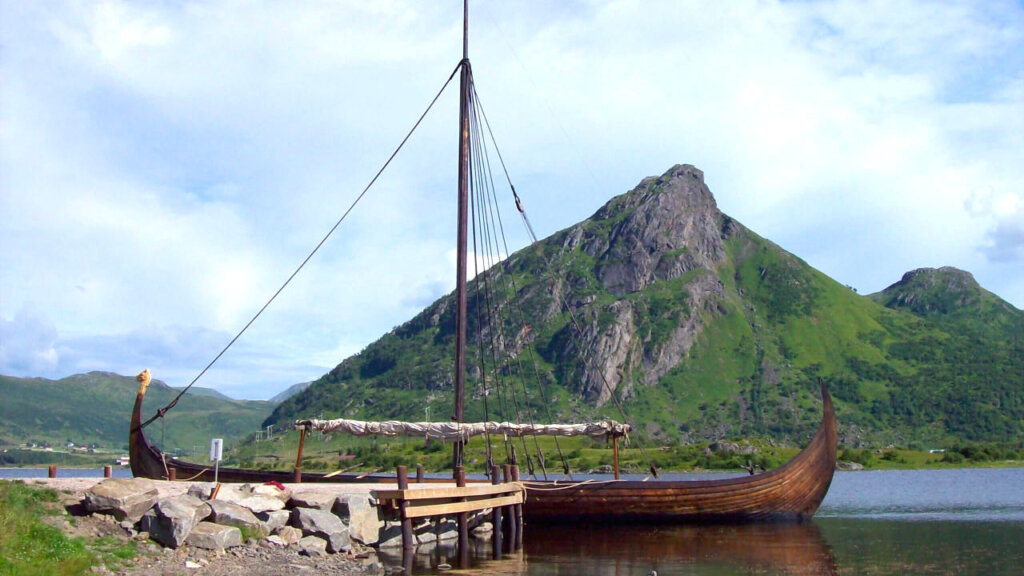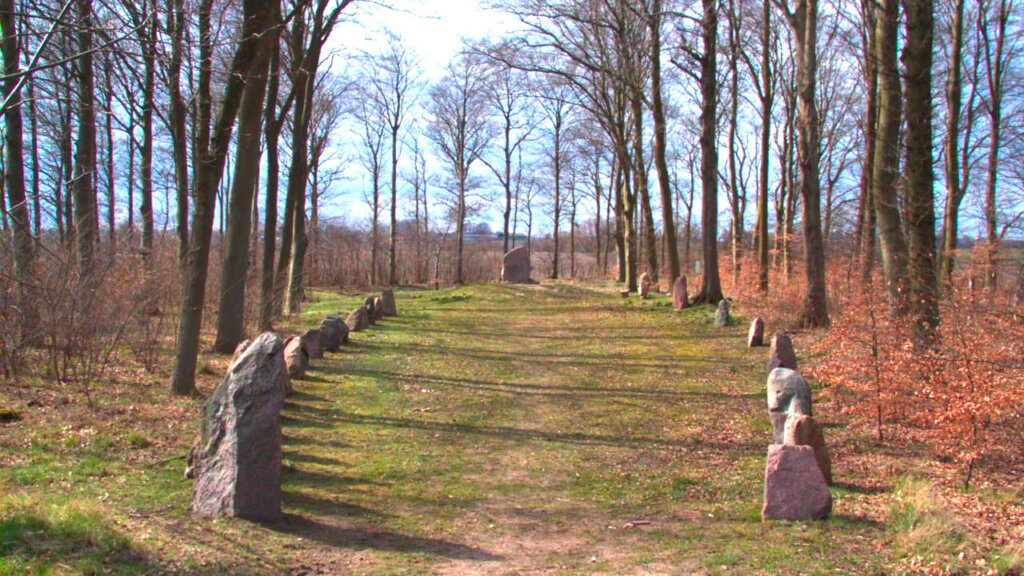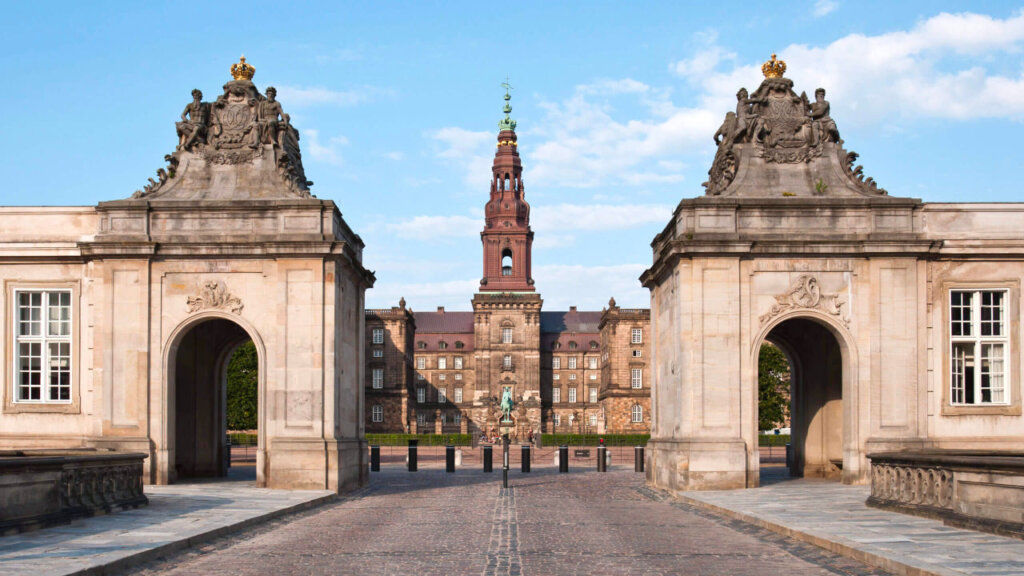
The Vikings are famous across the globe for being fearless raiders! For centuries they dominated Scandinavian regions, especially modern-day Norway, Sweden and Denmark. Although they are famous, there are many cultural misconceptions about the Vikings! For example, did you know that there is no evidence that their helmets had horns?
In this post, we are going to examine truths and myths regarding Viking burial traditions. On the final part of this post we also describe modern Danish burial customs. Keep also in mind that the Viking customs described below were the same also for Sweden and Norway!

Before we explore specifics traditional Viking burial rites, it is worth discussing what death itself meant for the Vikings. Ancient Vikings were pagan, worshiping among others, the Æsir Pantheon, including Thor and Odin.
Additionally, they believed that the soul consists of multiple different elements. Some souls ended up in Hel – not to be confused with the Christian Hell. Others, usually those of ferocious warriors, ended up in Valhalla or Fólkvangr. Burial practices focused often on helping these souls with their adventures in the afterlife.
Finally, Finns and the Sami people also influenced Viking beliefs. However, during the 12th century they converted to Christianity due to their interactions with other Europeans.
Nowadays most people would picture the following when thinking of Viking funerals: A longboat filled to the brim with offerings for the dead and the Gods. The ship sails away from the coast and an archer shoots a flaming arrow. Then the flames are burning the dead and the ship. So we all know how a Viking funeral looks like… or do we?
This description is closer to a Hollywood movie than it is to reality. Actual Viking funerals looked quite different!
For example, instead of setting a long ship on fire, Vikings cremated their dead in a huge pyre. This also makes sense from a scientific point of view since burning wood is not hot enough to cremate a human body. Additionally, seawater would further lower the temperature of the fire. Therefore, it becomes obvious that, practically speaking, a burning longboat cremation was just not possible!

Vikings did cremate their dead. However, they used charcoal and not just wood to cremate the body. As a result larger amounts of smoke were produced by the flames. That also made sense according to Norse religious views. Specifically, Vikings believed that the smoke of the pyre helps the soul to travel to the afterlife.
Additionally, there were grave offerings accompanying the body. Such offerings included sacrificed animals, foods but also tools or weapons. These weapons were broken as a sign that the warrior had fallen. Furthermore, breaking the weapons discouraged any potential grave robbers. In some cases, Vikings also sacrificed slaves for a funeral. Most historians agree that the grave offerings were burnt with the body of the deceased in this large pyre. Finally, Vikings believed that these offerings would help the soul of the fallen in the afterlife.
Did Vikings use Ship Burials? Well, yes… and no!
It is true that Vikings used the so-called ship burials. However, this is not what most people think. After they were done cremating the body and the grave offerings, they buried the ashes. Sometimes Vikings also placed stones around the grave in the shape of a ship. These are called stone ships.
In rare cases, if the deceased was a leader or an important figure of the clan, Vikings buried them in an actual Longboat. They then placed the cremated ashes in the ship and covered completely with soil. That formed a small hill, a mound. Mounds are also called Tumuli and can be still found across Scandinavia and in Baltic countries.
Therefore, ship burials did exist, but they were an honor reserved for the most prestigious Vikings! They also never actually took place on the water.
Nowadays, we can simply go to a lawyer if you want to make a last will and testament. Or even easier, we can use an online end-of-life service. Vikings didn’t have the same luxury, though. But this doesn’t mean that they didn’t have wills.
In an ingenious way, Vikings used runestones as a form of a last will and testament. However, any discussions about inheritance only started once all the alcohol was gone at the following feast. Other burials were simpler and the sites were often located close to settlements. An example of that is the Lindholm Høje burial site close to Aalborg, in Northern Denmark.

Contemporary Danish burial rites look, naturally, very different compared to the Viking customs of their ancestors. The country has adopted Christianity, mostly Lutheranism. This has deeply affected modern ideas regarding death and burial customs.
Most Danes identify as Lutheran Protestants and are members of the Evangelical Lutheran Church of Denmark. Denmark is not a secular state meaning that there is a tight connection between religion and politics. Therefore, most people have a Christian burial, with cremation rising in popularity only in recent years. Could the returning cremation signify a further appreciation for Viking funeral tradition? We doubt it, but it’s still fascinating to imagine so.
It is also worth mentioning that Denmark was the last European country to adopt being brain dead as a criterion for legal death. Danish organ donation rates were some of the lowest in Europe during the early 1990s. However, since then there has been a major shift in public opinions about organ donation. Danes exhibit now some of the most positive attitudes towards organ donation in the world!
Denmark is a Kingdom with two autonomous territories, the Faroe Islands and Greenland, and of course, a Royal Family. Although Royals may live very differently than us, we all share the same final destination.
Before Prince Henrik passed away in February 2018, he prepared one last romantic surprise for his wife, Queen Margrethe II: a blossoming garden of flowers for his private funeral that took place at the Christiansborg Palace in Copenhagen.
That holds special meaning for the couple since they words blossoming garden were used at the couple’s royal wedding speech to describe Denmark. Prince Henrik added back then that his wife is the most beautiful flower of the garden.

We hope you learned something new regarding this country’s death practices!
If you want learn more on Scandinavian funeral practices, we recommend our Sweden article. Alternatively, you can ready about Arctic death practices on our Greenland article, which after all is part of the Kingdom of Denmark.
The average mixed death rate in Denmark is 9,5 per 1.000 people (2018) and is on the rise since 2014.
The burial is normally eight days after someone has passed away.
Around three quarters of the Danes are members of the Church of Denmark and thus, are Evangelical Lutherans. There is also a small Catholic and Muslim community.
Although Danish people were initially not very much in favor of organ donation, their views have changed in recent decades. In 2019 the rate of utilized donated organs per million population was 16,85. That corresponds to 100 organ transplantations.